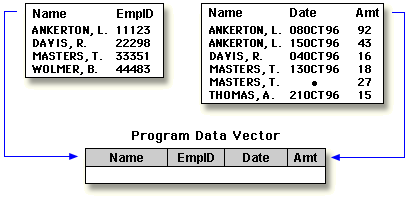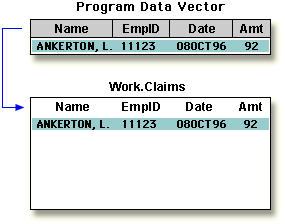| Merging SAS Data Sets |
| Match-Merge
Processing |
| The examples in this lesson are straightforward. However,
match-merging can be more complex, depending on your data and the output
data set you want to create. To predict the results of match-merges correctly,
you need to understand how the DATA step performs match-merges.
When you submit a DATA step, it is processed in two phases:
|

|

The following pages cover DATA step processing in greater
detail. In them, you learn
|
  |
|
Copyright © 2002 SAS Institute Inc., Cary, NC, USA. All rights reserved.